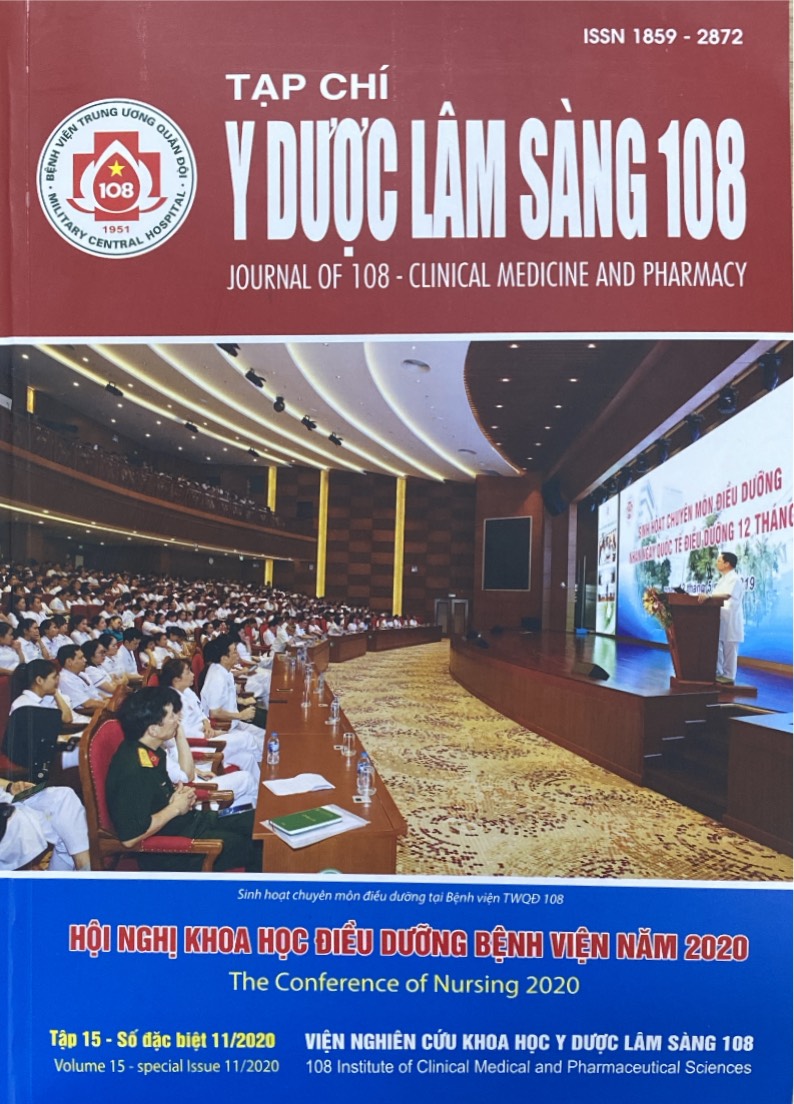Evaluation of communication skills of nurses at the Clinic for Senior Officers, 108 Military Central HospitalStudy on the characteristics of primary knee osteoarthritis and the relationship between the degree of osteoarthritis with comorbidities
Main Article Content
Keywords
Abstract
Objective: To describe the characteristics of primary knee osteoarthritis and the relationship between the degree of osteoarthritis (OA) with comorbidities. Subject and method: 360 patients primary knee osteoarthritis, clinically examined, research accompanying diseases, anthropometric measurements, tests, assessment degree of OA, analysis the relationship between the degree of OA with comorbidities, method of cross-sectional description. Result: Average age 63.29 ± 11.20 years; women 74.4%; average weight 57.84 ± 9.41; BMI 23.48 ± 3.12; OA stage 1, 2 with 304 patients (84.4%), stage 3, 4 with 56 patients (15.6%), Overweight and obese patients had 198/360 (55%), diabetes had 66/360 (18.3%); hypertension had 155/360 (43%), patients had waist circumference increased 237/360 (65.8%), cholesterol increase was 177/259 (68.3%), triglyceride increase was 134/298 (45%), the low HDL-C was 113/226 (50%). The rate of patients with elderly, increased waist circumference, obesity, hypertension, increased triglycerides and decreased HDL-C increase in the group OA stage 3, 4. Conclusion: Patients with primary OA are mainly female, older; weight, waist circumference and BMI increase. The rate of comorbidities: Waist circumference increased; hypertension, dyslipidemia, obesity tends to increase in the severely OA.
Article Details
References
2. Đặng Hồng Hoa (1997) Nhận xét một số đặc điểm lâm sàng, cận lâm sàng của bệnh hư khớp gối. Luận văn tốt nghiệp Thạc sỹ y học, Trường Đại Học Y Hà Nội.
3. Lê Bảo Ngọc (2015) Một số đặc điểm hội chứng chuyển hóa ở bệnh nhân thoái hóa khớp gối nguyên phát. Luận văn tốt nghiệp Cử nhân điều dưỡng, Trường Đại học Y Hà Nội.
4. Đỗ Trung Quân (2011) Bệnh nội tiết chuyển hóa. Nhà xuất bản Giáo dục Việt Nam, tr. 283, tr. 465- 468.
5. Hart DJ, Spector TD (1993) The relationship of obesity, fat distribution and osteoarthritic in women in the general population: The chingford study. J Rheumatol 20: 331-335.
6. Inoue R, Ishibashi Y et al (2011) Medical problem and risk factors of metabolic syndrome among radiographic knee osteoarthritic patients in the Japanese general population. J Orthop Sci 16(6): 704-709.
7. Rajitkanok Amy Puenpatom et al (2009) Increased prevalence of metabolic syndrome in individuals with osteoarthritis: An analysis of NHANES III data. Postgraduate Medecine 121(6): 0032-5481: 194-9260.
8. Soran N, Altindag O el al (2008) Assessment of paraxonase activities in patients with knee osteoarthritic. Redox rep 13: 194198.
9. Tsezou A, Lliopoulos, Simopoulou T (2010) Impaired expression of genes regulating choleterol efflux in human osteoarthritic chondrocytes. J Orthop Res.
10. Yoshimura N, Muraki S et al (2012) Accumulation of metabolic risk factors such as overweight, hypertension, dyslipidaemia, and impaired glucose tolerance raises the risk of occurrence and progression of knee osteoarthritis: A 3-year follow-up of the ROAD study. Osteoarthritis Cartilage: 1217-1226.
 ISSN: 1859 - 2872
ISSN: 1859 - 2872
